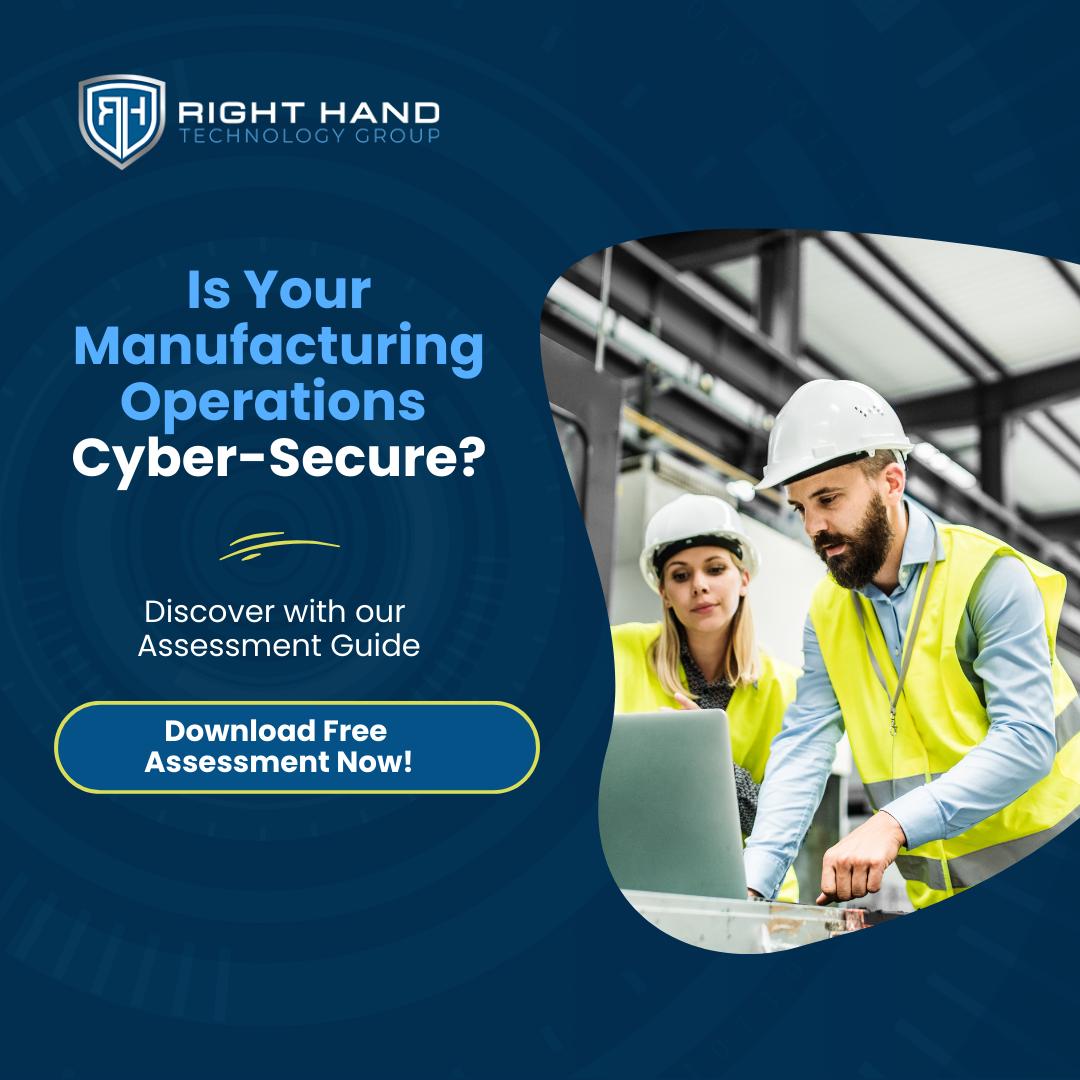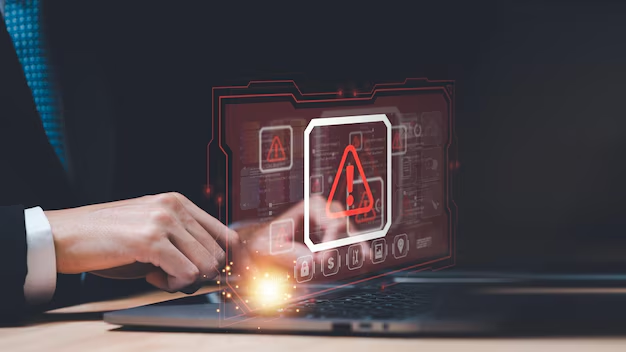The digital threat landscape is evolving faster than ever. From ransomware attacks to phishing scams, cybercriminals are becoming smarter—and unfortunately, businesses of all sizes are on their radar. For companies that can’t afford a full-time Chief Information Security Officer (CISO), there’s a cost-effective and flexible alternative: the Virtual CISO (VCISO).
A VCISO provides on-demand cybersecurity leadership, offering the same strategic oversight as a traditional CISO but without the high cost or long-term commitment. Whether you’re a startup handling sensitive customer data or a growing company looking to achieve regulatory compliance, this solution could be the very thing that protects your business from its next big threat.
Related Service: CISO Coaching
Section 1: Virtual CISO Definition & Types
A virtual CISO service provides organizations with expert cybersecurity leadership through an external consultant who fulfills the strategic responsibilities of a Chief Information Security Officer without being a full-time employee. This model allows companies to access executive-level security expertise at a fraction of the cost of hiring an in-house professional.
The three common types of CISO arrangements include the traditional in-house CISO who works as a full-time employee, the interim CISO brought in for temporary leadership during transitions, and the vciso who provides ongoing strategic guidance on a part-time or project basis. Virtual cisos have become increasingly popular among small to medium-sized businesses that need sophisticated security oversight but cannot justify the expense of a full-time executive position.
In our experience working with dozens of SMBs, the biggest confusion around virtual CISO services stems from not understanding the different engagement models available. A CISO’s day-to-day responsibilities encompass strategic security planning, risk assessment oversight, compliance management, and cross-departmental collaboration. They develop comprehensive security policies, coordinate incident response procedures, and ensure regulatory compliance across all business operations.
The vciso service model delivers these same capabilities while offering greater flexibility and cost efficiency for organizations seeking professional security leadership. For an in-depth look at how virtual CISO services work, see our comprehensive virtual CISO guide. The vciso approach allows businesses to implement enterprise-grade security frameworks without the overhead costs associated with executive-level salaries and benefits.
Related Topic: Cybersecurity Face-Off: Penetration Testing vs. Vulnerability Scanning
Section 2: Cost Analysis & Pricing Models
How much does a virtual CISO cost? The cost of a virtual CISO varies significantly based on organization size, complexity, and service scope. Most vciso arrangements cost between $5,000 to $25,000 monthly, representing substantial savings compared to full-time executive salaries that typically range from $200,000 to $400,000 annually plus benefits.
We’ve seen clients save 60-70% compared to full-time hires while getting access to senior-level expertise they couldn’t otherwise afford. Hourly rates for vciso services generally fall between $200 to $500 per hour, depending on the consultant’s experience, industry expertise, and geographic location.
Retainer fee models provide the most common pricing approach for vciso engagements. Monthly retainers typically range from $8,000 to $20,000, covering predetermined hours of strategic consultation, policy development, and ongoing security oversight.
The fractional ciso model offers additional flexibility, allowing organizations to purchase specific blocks of time or project-based services. This approach works particularly well for companies requiring periodic security reviews, compliance audits, or incident response planning without ongoing monthly commitments.
Organizations should evaluate vciso pricing against their specific security needs, regulatory requirements, and budget constraints. The investment typically delivers immediate access to executive-level expertise, established security frameworks, and proven risk management strategies that would otherwise require years to develop internally.
Related Topic: Protect Your Business with Cybersecurity Compliance Services That Work
Section 3: Pros of Virtual CISO Services
Why hire a virtual CISO? Organizations choose vciso services to access executive-level cybersecurity leadership without the financial commitment of a full-time hire. A virtual ciso brings immediate expertise, established frameworks, and proven methodologies that would take years to develop internally. This approach provides cost-effective access to senior-level security expertise while maintaining operational flexibility.
Can CISO work remotely? Modern vciso arrangements operate entirely through remote collaboration, leveraging cloud-based security tools, video conferencing, and digital reporting platforms. Remote work capabilities have proven highly effective for strategic security oversight, policy development, and cross-departmental coordination. Virtual ciso professionals provide executive guidance without requiring physical presence.
A vciso provides substantial value through immediate implementation of enterprise-grade security measures, regulatory compliance frameworks, and incident response procedures. One of our manufacturing clients went from failing vendor security reviews to passing CMMC assessments within six months of engaging a virtual CISO. The return on investment typically manifests within months through improved security posture, reduced vulnerability exposure, and enhanced regulatory compliance. Organizations benefit from avoiding costly security breaches, regulatory penalties, and the extended learning curve associated with developing internal security expertise.
The vciso model delivers measurable value through strategic security planning, risk mitigation, and compliance management at a fraction of traditional executive costs. This comprehensive security expertise enables organizations to implement sophisticated protection strategies while maintaining budget efficiency and operational agility throughout their cybersecurity transformation.
Related Topic: The Future of Cybersecurity: Why Endpoint Detection and Response is Non-Negotiable in 2025
Section 4: Cons & Limitations
Is CISO stressful? Security leadership roles carry significant stress due to constant threat monitoring, regulatory compliance pressures, and executive accountability for organizational protection. A vciso faces similar security challenges while managing multiple client relationships, staying current with evolving threats, and maintaining expertise across diverse industries. The responsibility for preventing costly breaches creates ongoing pressure.
How long does a CISO last? The average tenure for security leadership positions ranges from 18 to 26 months, reflecting the demanding nature of cybersecurity management. An in-house ciso often experiences burnout from continuous threat management, budget constraints, and organizational politics.
Virtual arrangements have inherent limitations including reduced organizational integration, limited physical presence for crisis management, and potential communication gaps with the internal security team. The most common challenge we observe is when businesses expect their virtual CISO to be available for immediate tactical support like an internal employee. A virtual ciso may struggle to fully understand company culture, informal processes, and interpersonal dynamics that influence security implementation. Time constraints across multiple clients can limit deep organizational knowledge development.
The vciso model also faces challenges in building strong internal relationships, providing immediate hands-on support during security incidents, and maintaining consistent availability across multiple client commitments. Organizations may experience reduced security team cohesion and delayed response times when critical decisions require vciso consultation rather than immediate on-site leadership during emergency situations.
Related Topic: Risk-Based Cybersecurity Framework: The Future of Digital Risk Protection
Section 5: Role Comparisons & Hierarchy
What is the difference between a CISO and a security officer? A CISO operates as an information security executive with strategic oversight responsibilities, while a security officer typically handles tactical implementation and operational monitoring. The vciso provides executive-level governance, policy development, and organizational risk management, whereas a security professional focuses on daily security operations, incident response, and technical controls implementation.
We often field questions about how aa virtual CISO fits with existing IT teams—the key is understanding that it’s strategic leadership, not operational management. What is the difference between vCISO and vCTO? A virtual ciso concentrates specifically on cybersecurity strategy, compliance, and risk management, while a vCTO oversees broader technology infrastructure, system architecture, and digital transformation initiatives. The vciso specializes in threat mitigation and security governance, whereas the vCTO manages comprehensive technology strategy including software development, IT operations, and technological innovation across the organization.
Who is higher, CISO or CTO? Organizational hierarchy varies significantly between companies, but typically both positions report directly to the CEO or serve as peers within the executive team. In technology-focused organizations, the chief information officer or CTO may have broader authority, while security-conscious industries often elevate the security leader to equivalent executive status. The vciso maintains similar strategic influence regardless of formal reporting structure.
The security leader emphasizes protection, compliance, and risk mitigation, while technology executives prioritize innovation, efficiency, and business enablement. Successful organizations ensure both positions collaborate effectively to balance security requirements with operational objectives and technological advancement.
Related Topic: How to Perform a Cybersecurity Risk Assessment Like a Pro?
Section 6: Implementation & Getting Started
How to become a virtual CISO? Providing vciso services requires extensive cybersecurity experience, executive-level credentials, and proven track records in security leadership roles. Professionals typically need 10-15 years of progressive security experience, relevant certifications like CISSP or CISM, and demonstrated expertise in regulatory compliance, risk management, and strategic planning before transitioning to virtual ciso consulting.
Our typical engagement starts with a two-week assessment period to understand current security posture before developing a strategic roadmap. The engagement process begins with a comprehensive security assessment to identify organizational vulnerabilities, compliance gaps, and strategic priorities. Virtual CISOs typically begin engagements with a thorough cybersecurity risk assessment process to evaluate current security posture, regulatory requirements, and business objectives to determine appropriate scope of services. The vciso develops customized security roadmaps and implementation timelines.
Organizations should evaluate whether virtual CISO arrangements align with their specific security needs through careful analysis of budget constraints, organizational maturity, and compliance requirements. Companies benefit most when they need executive-level security expertise but cannot justify full-time executive costs. A vciso helps organizations implement sophisticated security programs while maintaining operational flexibility and cost efficiency.
The assessment process should examine internal security capabilities, regulatory obligations, and growth projections to determine optimal engagement models. The vciso model works best for companies seeking strategic security leadership without the overhead of permanent executive positions and associated infrastructure investments.
Related Topic: Why Cybersecurity Is the Best Investment for Your Small Business?
Section 7: Future Considerations & ROI
Can AI replace CISO? Artificial intelligence cannot replace the strategic thinking, stakeholder management, and executive decision-making that define effective security leadership. While AI enhances threat detection and automates routine security tasks, a vciso provides irreplaceable human judgment for complex risk assessments, regulatory interpretation, and organizational change management. Looking ahead, we’re seeing virtual CISOs become even more valuable as they help organizations evaluate and implement AI-driven security tools responsibly. The virtual ciso role will evolve to leverage AI tools while maintaining essential human oversight for cybersecurity strategy development.
Is CISO considered C-level? The CISO position has achieved C-level recognition in most organizations, reflecting the critical importance of security governance in modern business operations. A vciso maintains equivalent strategic authority and executive influence despite external consultant status. This C-level designation ensures direct access to senior leadership, board-level reporting responsibilities, and strategic input on organizational risk management decisions.
Long-term value assessment for vciso arrangements demonstrates substantial return on investment through reduced security incidents, improved compliance posture, and enhanced organizational resilience. Virtual CISOs excel at IT strategy planning that aligns cybersecurity with business objectives. Organizations typically realize measurable benefits within 6-12 months through implementation of structured security frameworks, risk mitigation strategies, and regulatory compliance programs. The vciso model provides sustained value by adapting security strategies to evolving threat landscapes while maintaining cost efficiency.
Organizations gain flexible security leadership that adapts to growth, regulatory shifts, and cyber threats while delivering consistent executive-level strategic guidance.
Related Topic: Managed IT Services in Pittsburgh: Why Pittsburgh Businesses Trust Local Managed IT Services?
Final Thoughts:
Choosing whether a Virtual CISO (VCISO) is right for your business comes down to a realistic evaluation of your current security posture, budget, and internal leadership needs. For small to mid-sized companies, a VCISO offers a powerful balance of affordability, expertise, and strategic flexibility—especially when full-time security leadership is financially out of reach.
Yet, cybersecurity isn’t one-size-fits-all. Some businesses with highly regulated environments or complex infrastructures might require more hands-on, in-house leadership. Start by honestly assessing your organization’s current security, future goals, and the level of support needed to stay fully protected.
If you’re unsure where to begin, or you’re ready to elevate your security without overextending your resources, Right Hand Technology Group specializes in helping businesses like yours make smart, scalable cybersecurity decisions. Their trusted Virtual CISO services align with your business goals, ensure compliance, support growth, and protect digital assets at every stage.
FAQ Section
How much does a virtual CISO cost?
A vciso typically costs $5,000-$25,000 monthly, significantly less than full-time executive salaries. The cost of a virtual CISO depends on organization size, complexity, and service scope. Fractional ciso arrangements offer flexible pricing models, while virtual ciso services provide executive-level expertise at reduced overhead costs.
What is the difference between vCISO and vCTO?
A VCISO handles cybersecurity strategy, risk, and compliance, while a VCTO drives digital transformation and oversees overall technology infrastructure. The virtual ciso specializes in security governance, whereas vCTOs handle comprehensive technology strategy and system architecture.
Can CISO work remotely?
Yes, a vciso can effectively provide services remotely through cloud-based security tools, video conferencing, and digital collaboration platforms. Virtual ciso professionals successfully manage security programs, conduct assessments, and deliver strategic guidance without requiring physical presence at client locations.
Is hiring a virtual CISO worth it?
Organizations that hire a virtual CISO typically achieve substantial ROI through improved security posture, regulatory compliance, and reduced breach risks. A vciso provides immediate access to executive-level expertise while maintaining cost efficiency and operational flexibility for growing businesses.
How long does a virtual CISO engagement last?
A vciso engagement duration varies based on organizational needs, typically ranging from 6 months to multi-year arrangements. Virtual ciso relationships often evolve from initial assessments to ongoing strategic partnerships, providing scalable security leadership as business requirements change.











